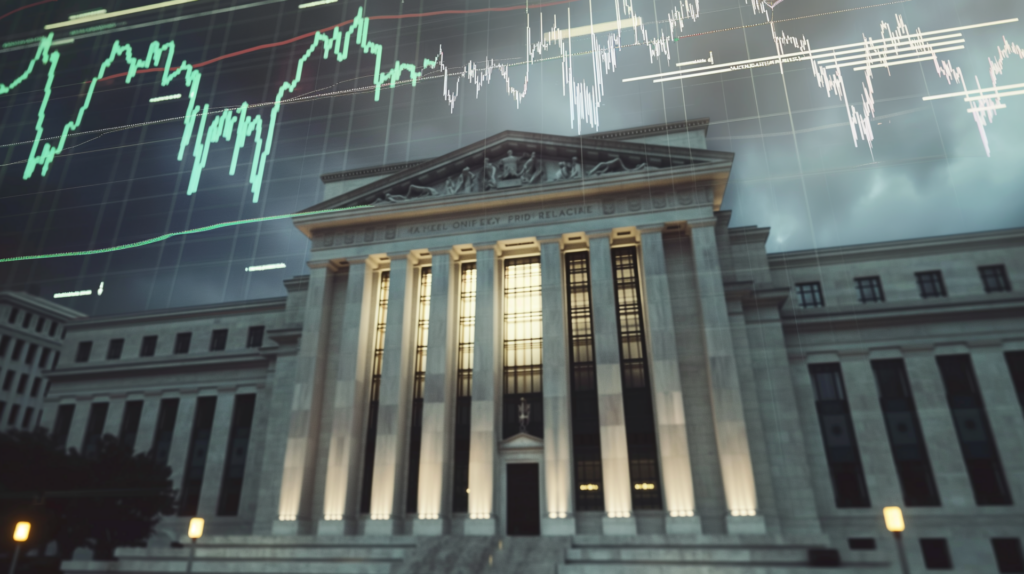Fed Interest Rate Cuts Expected, But Economists Warn Of 'Bumpy Course In This Last Mile' To Curb Inflation

A 0.25% interest rate cut at the Federal Reserve’s Nov. 7 meeting, just two days after the U.S. presidential election, is almost fully priced in by markets, with another similar cut likely in December as cooling inflation allows the Fed to gradually ease its policy stance.
The latest inflation data from September, as measured by the Personal Consumption Expenditure (PCE) price index, showed a deceleration that aligns with the Fed's 2% target, giving policymakers a green light to consider further easing.
The annual PCE inflation rate cooled to 2.1% in September, down from 2.3% in August, broadly matching analyst expectations.
Economists have largely welcomed the Fed’s most-watched inflation report, but with some caveats as consumer prices, especially in services, remain somewhat sticky.
Fed Nears Inflation Target, But Core Pressures Signal Caution
“The Fed’s inflation target is now essentially at 2%,” Joseph Brusuelas RSM US LLP principal & chief economist, commented on the data.
Extended to three decimal points, the PCE stands at 2.095%, with a month-over-month increase of 0.175%. Inflation is rising at a 1.4% rate on a three-month basis and 1.9% over six months, the expert explained.
“The Fed has re-established price stability,” Brusuelas added.
According to Jeffrey Roach, chief economist at LPL Financial, the slowdown in core services prices, excluding housing, could keep the Fed on track for two rate cuts by the end of the year.
Yet, Roach also warned investors of potential “head fakes” in inflation data, as the path to sustained 2% inflation is expected to be long and difficult.
Bill Adams, chief economist at Comerica Bank, echoed a similar sentiment, stating that while headline inflation has slowed close to the Fed's target, the persistence of higher core inflation could still affect the central bank's approach.
"The Fed will likely cut by a quarter percent at their post-election decision," Adams said, though he added that the Fed must remain vigilant as core pressures are far from fully subdued.
However, some Fed watchers are more cautious about declaring victory just yet. Core PCE inflation, which excludes food and energy, came in at 2.7% year-over-year, holding steady from August and surpassing estimates of 2.6%.
Mohamed El Erian, Allianz adviser and president at Queen’s College, commented “I suspect that, on the whole, this is not what the Federal Reserve expected data-wise when it suddenly decided last month to increase the pace of interest rate reductions from 25 basis points to 50 bps.”
El Erian added that the distribution of the price increases “will also capture the Fed's attention.” Moreover, the robust 0.4% increase in real consumer spending, which suggests consumer demand is still resilient, is seen as a factor that could complicate the Fed's efforts to maintain control over inflation.
Yet, he welcomed the reading in the Employment Cost Index (ECI) for the third quarter, which rose by 0.8%, the smallest gain since mid-2021.
Quincy Krosby, chief global strategist at LPL Financial, highlighted that the year-over-year core PCE print, which came in at 2.7%, indicates that inflation isn't entirely under control.
"The Fed is still on a bumpy course in this last mile to quell inflation and declare victory," Krosby said, emphasizing that the central bank's journey to stable 2% inflation may face additional hurdles.
“The Fed will need to acknowledge that with still resilient consumer spending, higher wages from a series of successful strikes, and a solid labor market, they will need to adopt the gradual approach towards lowering rates,” Krosby added.
Read now:
Image created using artificial intelligence via Midjourney.
© 2024 Benzinga.com. Benzinga does not provide investment advice. All rights reserved.
Breaking news
See all






